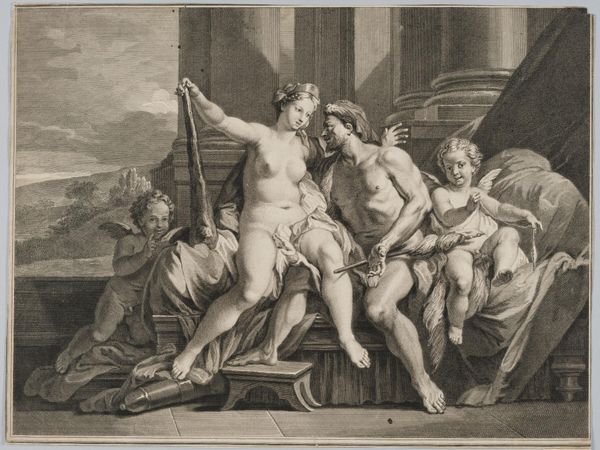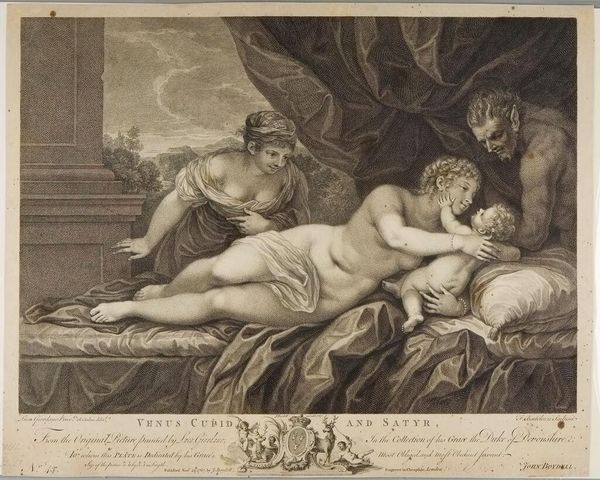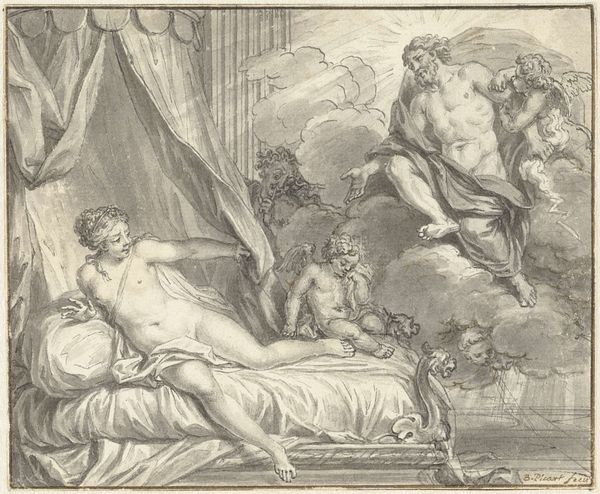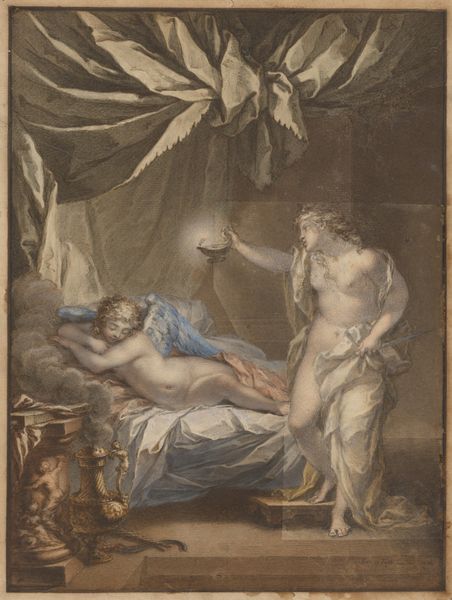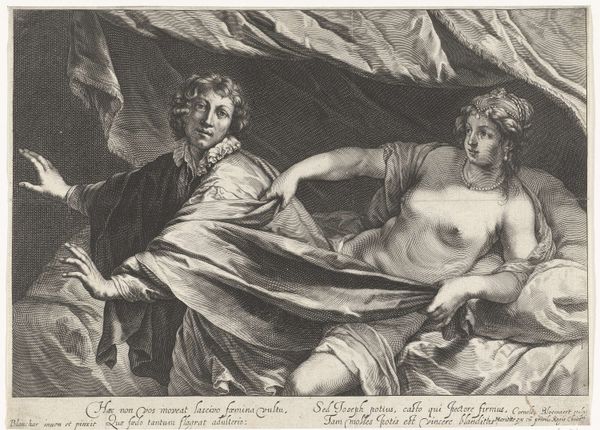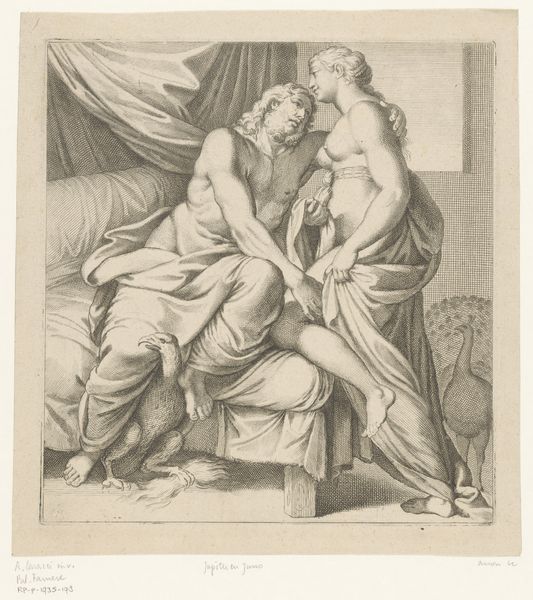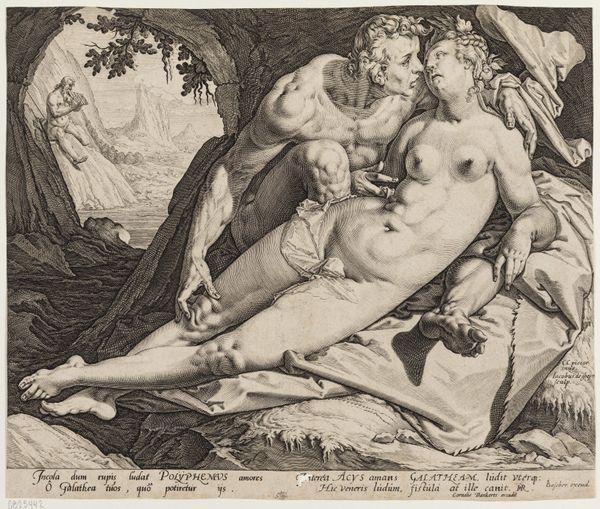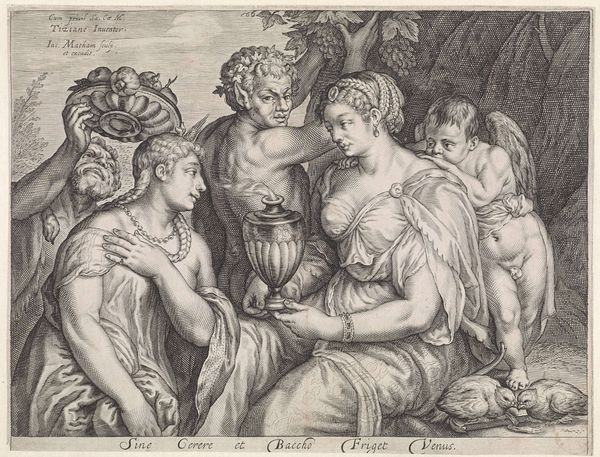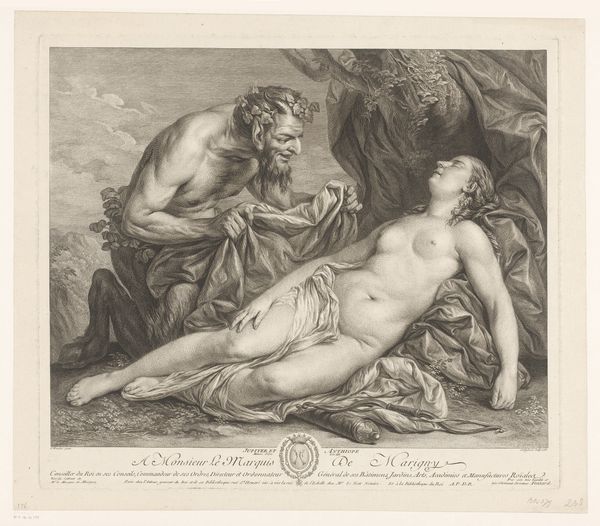
watercolor
#
allegory
#
baroque
#
figuration
#
watercolor
#
nude
Dimensions: height 148 mm, width 153 mm
Copyright: Rijks Museum: Open Domain
Curator: Here we have Jacob de Wit's watercolor, Ceres, Venus, Bacchus and Sleeping Cupid, dating from somewhere between 1705 and 1754. It's an allegorical piece, immediately striking for its pastel hues and depiction of classical figures. What are your initial thoughts? Editor: There's something about the translucence of the medium that softens the potentially bombastic subject matter. It's delicate, almost ephemeral—surprising given the allegorical weight we usually associate with baroque depictions of nudes. Curator: Absolutely. De Wit has masterfully manipulated watercolor to create a sense of lightness, particularly noticeable in the draping fabrics and the skin tones. Look closely at the composition; notice how he directs our gaze using Venus's extended arm towards the dormant Cupid, binding narrative and spatial arrangement. Editor: The arm seems to point more at a transaction to me: the placement of the child suggests value to the mother that could bring high commerce. What sort of labour or transaction produced this work, and to whom was its luxurious display meant to speak? Curator: Fascinating observation. Indeed, by Baroque standards, de Wit utilized watercolour – traditionally linked to studies and preparatory sketches, a material reality somewhat secondary to formal "grand art" finishes in oil paint for instance. Yet it has elevated status here by its refined precision to deliver allusions and allegories which echo sculptural forms while offering something fresh through the use of pigments, paper qualities or drawing expertise involved. Editor: How were these colors sourced? I mean, what narratives of material acquisition, manufacturing, and the labor market could this art object encapsulate through their very substance? That softness you spoke of might equally cloak issues related exploitation and production values linked with Baroque wealth generation in its wake? Curator: Your points are not mutually exclusive, of course, that richness is essential to the success of a formal reading and in light with sociohistorical analysis within baroque structure to illuminate art. However the compositional sophistication with each form being presented reveals an understanding in mythological canon from Wit whose own artistic language communicates a complexity beyond superficial rendering: one speaks volumes. Editor: Thanks, yes its just worth emphasizing that such ethereal artistry carries underlying questions relevant both through processes connected, its audience engagement back in history today' Curator: Agreed. Its historical layers reveal intricate interpretations. Editor: I value this reminder.
Comments
No comments
Be the first to comment and join the conversation on the ultimate creative platform.
